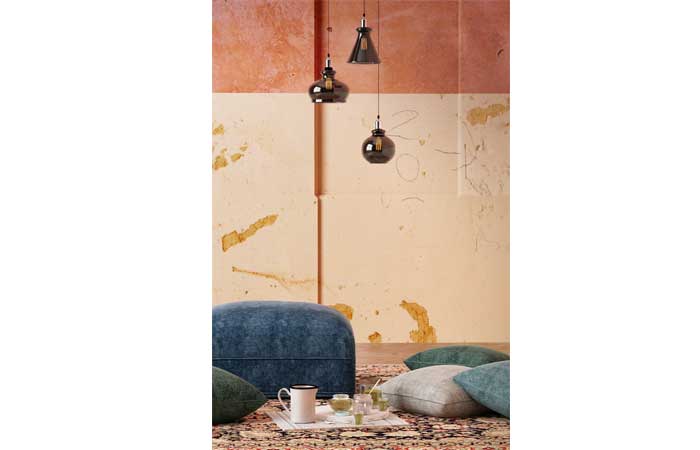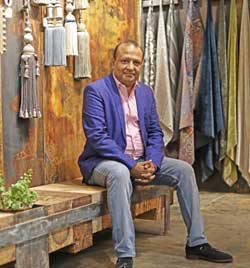
The New Era of Indian Textiles
The future of India’s textile industry is a rich tapestry woven with possibilities, says Rohit Khemka.
India’s textile industry, a rich blend of heritage and innovation, has long been a cornerstone of the nation’s culture and economy. For centuries, its looms have woven more than just fabrics, they have told stories of artistry, craftsmanship, and a deep connection to the land. Today, as the world embraces a more conscious and sustainable future, India’s textile industry finds itself on the brink of a transformative era. Amid global challenges and shifting demands, the revival of both the textile and textile engineering sectors is not only essential but also a unique opportunity to craft new narratives of resilience and renewal.
The Indian textile landscape reflects the diversity of the country’s cultural ethos. Handlooms coexist with advanced machinery, and the skilled hands of artisans work alongside cutting-edge technologies. From the handwoven saris of Varanasi to precision-driven technical textiles emerging from modern factories, the industry exemplifies the harmonious blend of tradition and innovation.
Yet beneath this vibrant exterior lies a sector grappling with the pressures of modernisation. Global competition, a rapidly evolving market, and the growing demand for sustainable practices present significant challenges. India’s textile engineers and manufacturers must navigate the delicate task of merging age-old techniques with futuristic advancements, striving to maintain a balance between craftsmanship and innovation. This balance holds the key to the industry’s rejuvenation and its future success.
Challenges faced by the industry
To truly understand the path forward, we must first unravel the threads that weaken the industry’s fabric. A key concern for many is the stagnation in technological progress within the textile engineering sector. While the industry has the potential to embrace modern innovations, much of it remains rooted in outdated practices, making it difficult for manufacturers to keep pace with global standards.
In addition, while artisans and craftsmen rank among the finest in the world, the labour force needs to adapt to the demands of contemporary textile production. The skilled hands that once created magic with looms now need to transition into working alongside machines, using tools that will help preserve and enhance the legacy of their craftsmanship.
Furthermore, the growing awareness of environmental sustainability has created an urgent need for the industry to reconsider its relationship with the natural world. Textiles, for all their beauty, are among the most resource-intensive industries globally. Water usage, chemical dyes, and the energy required for production all contribute to the industry’s environmental impact. However, where challenges exist, opportunities for change and innovation also arise.
Role of research and development in transformation
The most fertile ground for transformation lies in the realm of innovation. Research and development, when utilised effectively, can shape the future of India’s textile sector, enabling it to adapt to new realities while preserving its rich traditions. Whether through the exploration of sustainable materials or the development of cutting-edge textile technologies, innovation will serve as the foundation for the industry’s resurgence.
The rise of smart textiles-fabrics embedded with sensors that respond to external stimuli signals the start of a new era, where fabrics are no longer just garments but interactive, adaptable products. At the same time, the growing demand for technical textiles, from healthcare to defence, is unlocking new pathways for growth. India’s vast network of research institutions, in collaboration with industry leaders, has the potential to lead this transformation, infusing the sector with revolutionary products and processes.
Equally crucial is the role of automation and digitisation. By incorporating AI-driven technologies and IoT, textile production can be streamlined, minimising waste and ensuring that each piece of fabric is crafted with precision and purpose.
Sustainability and green initiatives
In a world increasingly defined by ecological consciousness, sustainability has become a necessity rather than a choice. The revival of India’s textile industry must be grounded in green principles, and age-old traditions offer the perfect inspiration. For centuries, Indian artisans have practiced eco-friendly techniques, using natural dyes and hand processes that honour the environment. Today, these methods are experiencing a resurgence as the industry looks to the past for solutions to future challenges.
One example is the growing popularity of eco-printing and natural dyes. Celebrated for their minimal environmental impact, these methods offer a poetic fusion of art and sustainability. The tactile beauty of eco-printed fabric, with its naturally formed patterns, aligns with the global demand for authenticity and environmental responsibility. Brands like RR Decor, committed to such practices, demonstrate how sustainability can coexist with luxury and elegance.
The shift toward circular economy models adds another dimension to this green transformation. By reducing waste, recycling materials, and extending the lifecycle of products, the textile industry can significantly lower its ecological footprint. These practices embrace the philosophy of creating something beautiful in harmony with nature, rather than at its expense.
Government policies & initiatives
The Indian government has recognised the immense potential of the textile industry, not just as an economic driver but as a cultural asset. A series of initiatives, ranging from financial incentives for modernisation to the development of textile parks, have laid the groundwork for the industry’s resurgence. These efforts are designed to empower manufacturers to modernise without losing sight of the artistry and heritage that define Indian textiles.
The National Technical Textiles Mission is one such endeavour, encouraging innovation while promoting the domestic production of advanced textiles. It’s a move that positions India not just as a fabric producer but as a global leader in textile innovation, capable of competing with international giants. Alongside this, the government’s Production Linked Incentive Scheme offers financial rewards to manufacturers who adopt modern techniques, pushing the industry toward a future driven by efficiency, innovation, and sustainability.
Skill development & capacity building
While technology and sustainability are critical, the heartbeat of India’s textile industry remains its people. The transition toward modern textile engineering must be accompanied by a robust commitment to skill development. It’s not just about machines replacing hands; it’s about equipping artisans and workers with the tools and knowledge to use technology to enhance their craft.
Programs like the Skill India Mission and partnerships with private enterprises are sowing the seeds for this new generation of artisans workers who honour the past but are equally prepared for the future. This blending of traditional knowledge with modern expertise is where the magic of India’s textile revival truly lies.
Future outlook
The future of India’s textile industry is a rich tapestry woven with possibilities. It is a future where age-old crafts exist side-by-side with groundbreaking technologies. It is a future defined by sustainability, innovation, and the artisans who breathe life into every thread. And, perhaps most importantly, it is a future that promises not just survival, but flourishing.
As we stand at this threshold of transformation, the question is not whether India’s textile and textile engineering industries will revive but how they will redefine themselves. In embracing the delicate dance between heritage and modernity, the industry has the power to craft a legacy of resilience, artistry, and sustainability. A legacy that, like the finest Indian textiles, will endure the test of time.
About the author:

Rohit Khemka is the Founder of RR Décor. Known as a pioneer in bringing about a change in how people view and use Bhagalpur silks, Khemka has established a name for himself in the interior furnishing industry.



